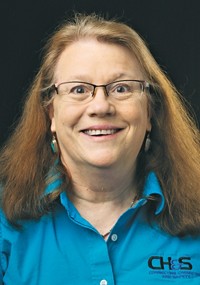Advertisement
Grab your lab coat. Let's get started
Welcome!
Welcome!
Create an account below to get 6 C&EN articles per month, receive newsletters and more - all free.
It seems this is your first time logging in online. Please enter the following information to continue.
As an ACS member you automatically get access to this site. All we need is few more details to create your reading experience.
Not you? Sign in with a different account.
Not you? Sign in with a different account.
ERROR 1
ERROR 1
ERROR 2
ERROR 2
ERROR 2
ERROR 2
ERROR 2
Password and Confirm password must match.
If you have an ACS member number, please enter it here so we can link this account to your membership. (optional)
ERROR 2
ACS values your privacy. By submitting your information, you are gaining access to C&EN and subscribing to our weekly newsletter. We use the information you provide to make your reading experience better, and we will never sell your data to third party members.
Education
Speaking the same nomenclature
by Michael D. Mosher, Chair, ACS Committee on Nomenclature, Terminology & Symbols
October 30, 2017
| A version of this story appeared in
Volume 95, Issue 43
The name of the Committee on Nomenclature, Terminology & Symbols(NTS) may sound intimidating to some, but we have a simple mission: We focus on items that are important to the field of chemistry, to the work that chemists and chemical engineers do, and to the education of chemists and chemical engineers.
Whether or not those speaking the language of science are members of the American Chemical Society, nomenclature, terminology, and symbols are an essential part of the conversation. Ensuring that we are correctly using the most current version of our language drives effective communication in the lab, in the classroom, in the boardroom, and with the general public.
As chemists serving our profession, NTS seeks to keep ACS members and the ACS Council updated on important and pressing issues related to nomenclature, terminology, and symbols. To accomplish this task, NTS members and associates keep current with various governing bodies, including those for the International System of Units, the International Union of Pure & Applied Chemistry (IUPAC), and the United States Adopted Names Council.
NTS works with other ACS committees and divisions, as well as external entities, to stay informed about technical matters related to nomenclature. NTS members are active IUPAC division members, educators, and industry professionals. First and foremost, we are practicing chemists.
Training our future chemists
How do we teach future chemists and chemical engineers about science? It starts early in their education. We must first help students understand the language of chemistry. By teaching students the proper nomenclature, terminology, symbols, and units, we can begin to communicate with those students about the theory, practice, and application of science.
Beginning in elementary school, students must learn to use the approved symbols correctly, to refer to substances with the correct terminology, and to use appropriate nomenclature for those substances. Students early in their careers are often fascinated with the experiments that they perform. Engaging students in the language of chemistry rather than encouraging rote memorization techniques helps instill the value of nomenclature.
The proper use of current nomenclature, terminology, and symbols is the key to improving chemistry education and practice. Because student learning tends to focus on knowledge that is “have-to- know” for an exam rather than on “want -to-know” for the utility of the topic, educators must be vigilant in exciting students.
Anticipating the “why” questions and focusing discussions within academia on practical examples and applications can help facilitate student learning. What practical examples of the importance of nomenclature, terminology, and symbols can educators include in lectures and assignments?
Nomenclature is also a safety issue: How can we help students and ourselves be safe without a common language for the substances we handle? Given increasing interest in the creation and maintenance of a culture of safety, it is vital that we use the approved and appropriate nomenclature.
Imagine an incorrect calculation of the stoichiometry in an air-sensitive reaction because of a misunderstanding of the correct units. The issues from such a situation could be disastrous. The same issues arise from the incorrect use of nomenclature in selecting reactants for a process; misunderstanding the nomenclature of a substance written on a bottle would likely lead to an unsafe situation.
Misunderstanding or incorrect calculations may seem like the underlying cause of the incidents illustrated here. The key point is that nomenclature, terminology, and symbols (when used properly) are there to help avoid these situations. Understanding what is being used in the laboratory, the functionality of the substances, and their risks in use and storage is important. That understanding begins with the knowledge and practiced use of correct nomenclature.
How can we better serve you?
As a committee focused on understanding and disseminating existing rules and future changes to nomenclature, terminology, and symbols, we are extremely interested in your use of our common language. How can we help you speak the language of chemistry? Are you an educator who would like resources for presenting materials in your classes? Are you a student with ideas of what would help you approach learning nomenclature? Are you an industry professional who would like some assistance in explaining substance naming to your nonchemist colleagues? Email me your ideas at michael.mosher@unco.edu.
I also invite you to join our dialogue by attending the open NTS meetings held on Monday afternoons of each ACS national meeting. If the mission and goals of NTS strike a chord with you, I invite you to assist us by providing feedback during our discussions of the issues that we explore.
Views expressed are those of the author and not necessarily those of C&EN or ACS.





Join the conversation
Contact the reporter
Submit a Letter to the Editor for publication
Engage with us on Twitter